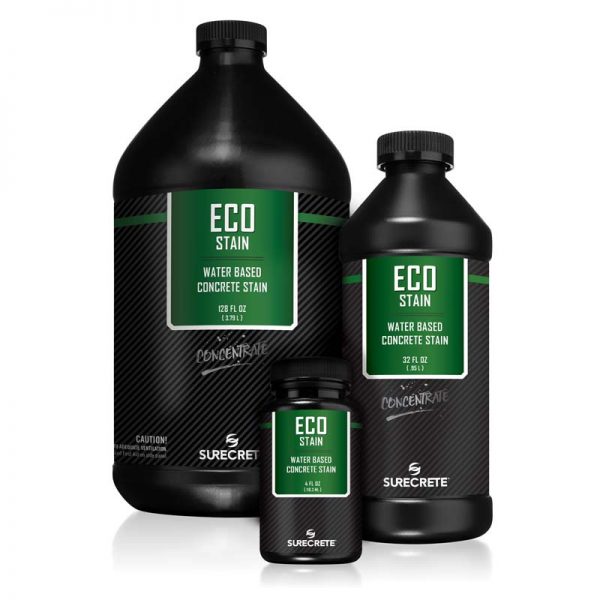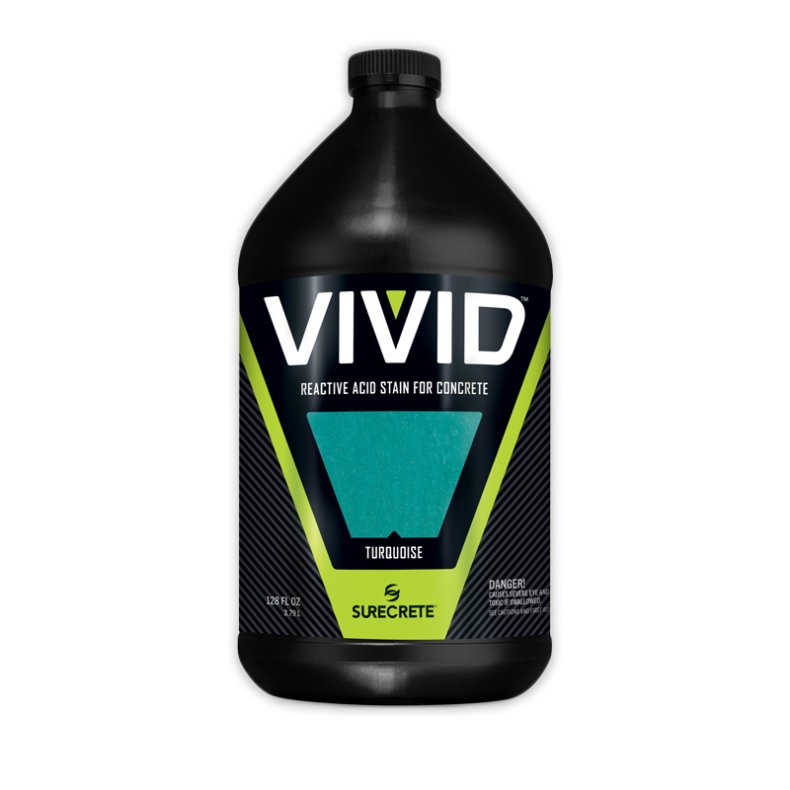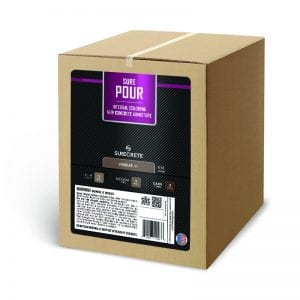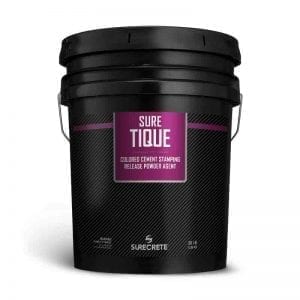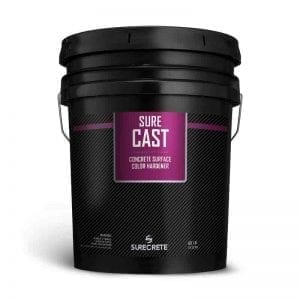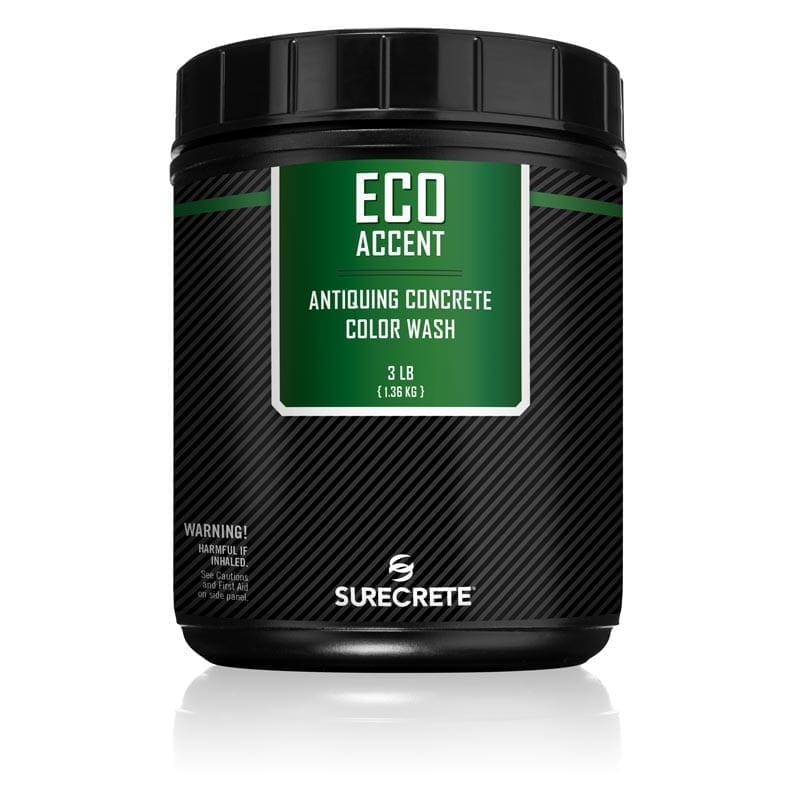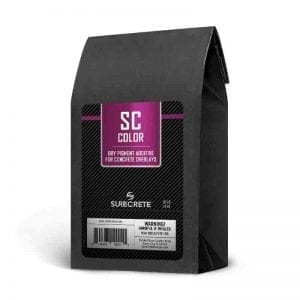CONCRETE COLORING SYSTEMS
Concrete/Integral Colorants
Secondary/Topical Colorants
OnDemand Color Station
Semi-Transparent Liquid Concrete Staining Products
We offer both reactive acid and UV-stable water-based stains. These products can be used on interior and exterior concrete floors, including overlays and micro-toppings.
Semi-Transparent Concrete Stain Water Based 30 Colors Eco-Stain™ by SureCrete
Reactive Acid Stain for Concrete 1 Gallon – VIVID™
What is Water-Based Concrete Stain?
Water-based concrete stain coloring, such as Eco-Stain, deliver micronized pigments into the concrete without the addition of acids or metallic ions to create rich colors to stain concrete floor surfaces. An excellent choice for “GREEN” cement projects. Water-based concrete staining is also more user-friendly than the typical reactive acid stain and offers a variety of application techniques. You will also find that Eco-Stains create the same lush, multi-hued look of traditional reactive acid stains. Typically there are many more color choices available, as a color is achieved from pigments, not a chemical reaction. Currently, there are 29 UV stable colors to choose from. You can apply them wet on wet, wet or dry, sprayed out of an airless gun or pump sprayer and brushed or sponged onto the cement surface. Variation in the concrete color is achieved through the variation in the porosity of the concrete. Unlike reactive acid stains, colors develop quickly and can be approved on site within minutes of application. All of the cleaning and preparation work for water base colors are identical to reactive acid stain described above. Application of water-based cement colors can usually be accomplished with spray equipment. Best results are obtained through multiple light coats. Brushing, ragging, sponging and mopping will yield one-of-a-kind results that blend colors in unusual fashion. Drips run, and errors are not permanent if the water-based Eco-Stain does not completely dry. For experienced reactive acid stain installers, the most challenging aspect of working with Eco-Stain is that they don’t hiss, smoke, burn, or sting. In the absence of those common elements, an installer wonders how is the color “getting in?” The simple answer is that the pigments are beautiful enough to penetrate the pores of the floor and numerous sufficiently to show color. This makes Eco-Stain the preferred LEED and GREEN concrete stain application.
What is a concrete acid stain?
Reactive acid stains are comprised of a wetting agent, a solution of hydrochloric or phosphoric acid, and salts (metallic ions). When applied on concrete (or any cement composition) the metallic ions chemically react with the free alkaline in the cement forming oxides that produce the visible color. When you think of oxides, you might remember from elementary science classes that rust is an oxide. Rust is a reddish-brown to nearly black, and most of the browns, tans, reds, and black of acid stains come from iron ions. Most blues and greens of acid stains come from copper ions. The variation of alkalinity in concrete causes the bright, mottled look that is so appealing in coloring. The same mutation is responsible for the unpredictability of coloring concrete. Someone looking for a totally even color or very specific shade of color should be steered clear of reactive acid stain. SureStain, a reactive acid concrete stain, is made to go on “naked” concrete. There can be no curing agents or sealers to block the coloring. Preparation of the concrete always includes cleaning. Many commercial concrete cleaners are suitable and readily available. Most cleaners require rinsing or at least mopping until the rinse water is clean. For premier cleaning results utilize a black pad on a rotational floor scrubbing machine. Although reactive acid stains can be applied on concrete that is not fully cured, the final color will not be achieved until the concrete is fully cured. This makes the creation of a sample difficult if not impossible. Usually the acid is capable of burning the salts into the concrete, however, concrete that has been hard troweled, especially “burned” black or blue may require profiling to accept the new color. A simple test of applying water to the concrete surface and observing whether it readily absorbs or beads up will determine if the stain will “bite.” The concrete must absorb and darken up with the introduction of water. Most installers will utilize acid resistant sprayers to apply the stain. Brushing or brooming the wet colorant may be necessary or desired especially if the concrete is not completely flat. Puddles of reactive acid stain may react with too much variance to be pleasing. Ordinarily, two coats of concrete stain are needed for preferred results. Many different installation techniques are available to experienced installers that create unique looks: layering colors, adding ironic or miracle grows fertilizer, using a leaf blower on puddles, and so on. Drips, spills, or bleeds across masked areas are permanent. Little room for error is allowed when staining with reactive acid. A small pH residue is typically formed on the surface of dried reactive acid coloring for cement. Before sealing, this residue must be removed and neutralized. A clear ammonia rinse can turn the slab back to neutral pH. Some residues require real effort and scrubbing to remove. A few manufacturers offer little residue reactive acid stains that need a simple clean-up with no neutralizing. The easiest way to add bright, vibrant color to any concrete floor is through the use of specially formulated color concrete stains. At SureCrete we’ve developed a truly innovative product in this regard – Eco-Stain. While some still prefer the earth-tone colors inherent in using a standard acid or chemical stain product (such as our SureStain line), most have found that the ease of application and wide variety of color made available in our water-based, and more eco-friendly, Eco-Stain product line is truly the only way to add stains to your concrete project. So whether you’re looking for a more traditional earth-tone look derived from our SureStain chemical staining product or the more vibrant and controlled color palette provided by Eco-Stain, we’ll make sure you can find whatever product best suits your needs easily and cost-effectively. Both water-based and Acid Stains are great for staining floors cement and concrete based. View acid stained floor pictures now.
Concrete Color Additive and Accent Colorant Products
Base colors are pigments mixed into a concrete sack mix, concrete overlay, Xtreme series, or DFRC mix. Doing so will create a colored cement from top to bottom.
Ready Mix Truck Integral Concrete Coloring 18 Colors SurePour™
Concrete Powder Release Stamping Colored Powder Agent SureTique™
Concrete Color Hardener Dry Powder Surface Broadcast SureCast™
Powder Stamped Concrete Accent Color Water-Based Stain Eco-Accent™
Concrete Powder Color Additive Overlays and Casting Products – SC Color™
Common Concrete Stain and Color Questions
What’s happening to my Eco-stain every time I apply it, it disappears?
Answer: Concrete by nature is very porous, for this, it likes to drink moisture when not sealed. Sometimes it is so porous that it sucks in the water which is the vehicle for the Eco-Stain thus taking the stain with it. In those cases, it would be a good idea to close up the surface a bit with ECO- Prime and then re-apply Eco-Stain.
With all the different options of staining concrete, why would I use integral color?
Answer: In many cases when contractors are stamping concrete, they prefer to use integral color for the extra dimension or depth that can be achieved by using a color hardener and or stains before sealing. Using color throughout the concrete can also help with maintenance in years to come as that base color will last for the life of the concrete.
My pool deck is ugly, and I want to change colors, the sealer appears to be in good shape, do I have to strip off the existing sealer to change the color?
Answer: If your sealer is in good condition and you have determined whether it is a solvent based or water based sealer you have a few options. Clean the surfaces with SureCrete SCR, then pressure wash the surface. If your existing sealer was a WB sealer, you could apply the Eco-Accent which will antique the surface, and then seal with new WB acrylic. If existing sealer was solvent based, you could use the Eco-Accent or the Translucent highlighting sealer to attain the variegated color you are looking for. Of course, you can also use pigmented sealers that come in 228 standard colors from our ON DEMAND system.
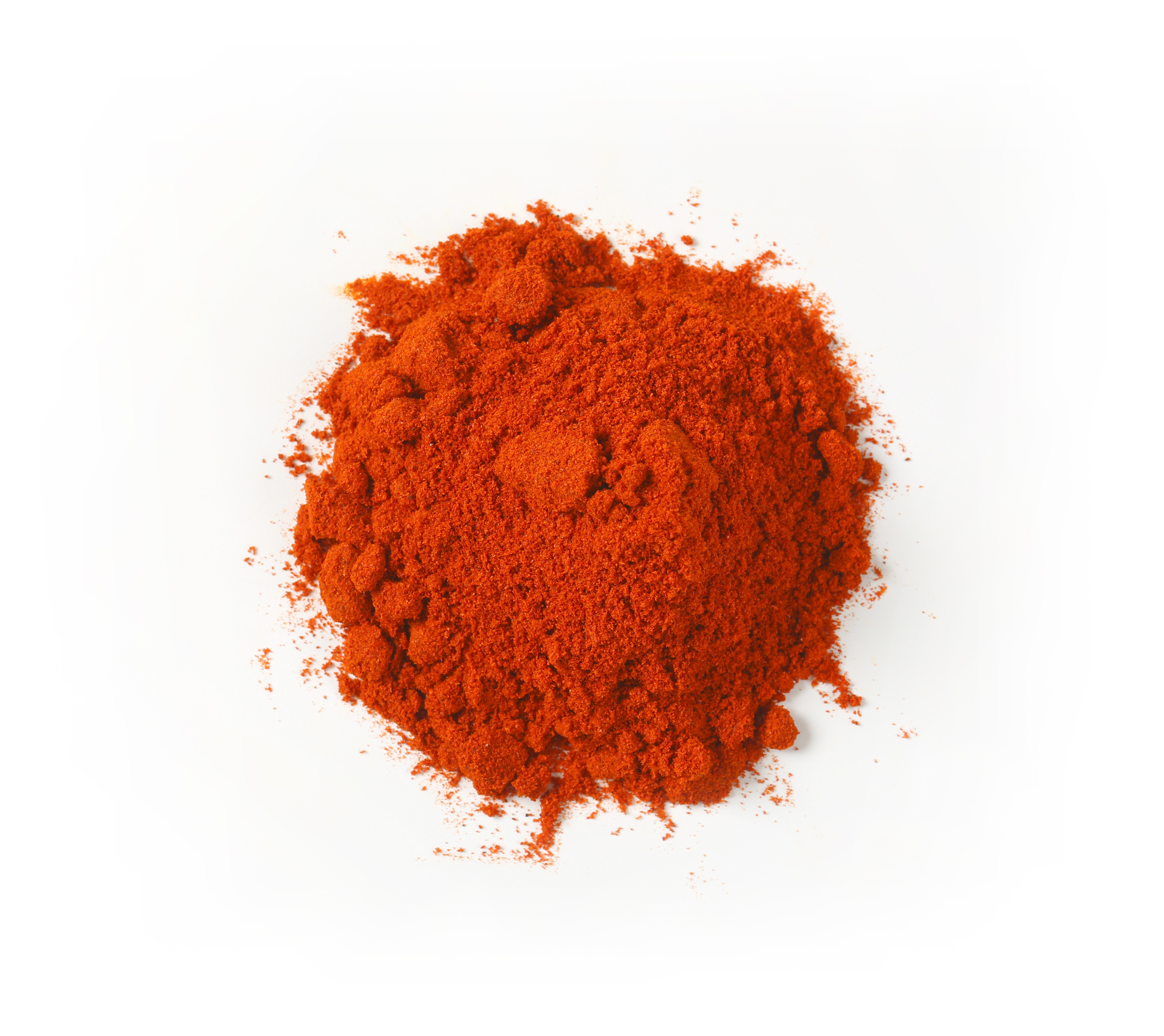
Powder and Liquid Decorative Colored Concrete Stains and Colors
While the natural color of concrete may be enough for some, most of us prefer slightly more color in our lives! With more than a few options for adding color to your concrete and so many different means of application, the possibilities are nearly endless for creating your unique piece of concrete art. SureCrete remains the leader in providing the widest range of Eco-friendly, UV-stable concrete liquid colored stains and pigmented additives in the decorative concrete industry. If you’re looking to color your concrete internally for a more solid color throughout the slab, we multiple base color options, whether you need to mix by the yard or use our pre-blended bag mixes. For a more translucent look, we also offer a multitude of secondary stains and colorants. To finish off and protect your project, we offer the widest color range available in the industry of paints and coatings, with over 200 standard colors. Whatever your preferred color palette and application, we will keep your project looking vibrant for years to come.

